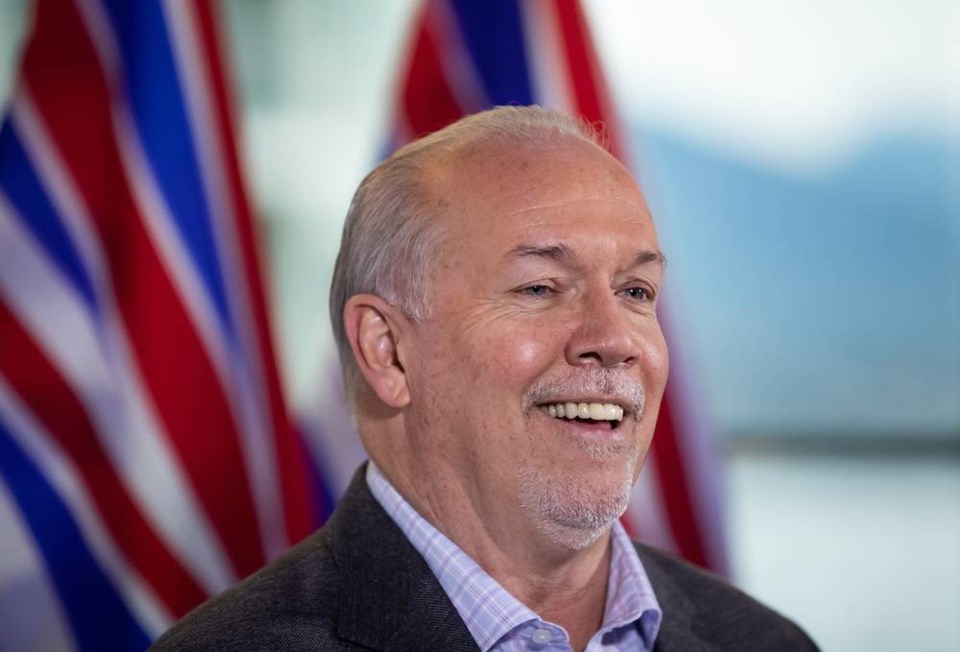NDP Premier-elect John Horgan is returning to Victoria from the campaign trail with a projected majority government and will be back on the job Monday as he awaits the final count of mail-in ballots.
The early election results show the NDP sitting at historic highs with 55 of the province’s 87 seats, but there are still about half a million ballots to be tabulated, beginning Nov. 6.
“We will, of course, respect the process … and will await the final count,” Horgan told reporters at a post-election news conference Sunday. “But, in the meantime, there’s work to be done.”
The ongoing COVID-19 pandemic will remain the government’s highest priority and Horgan pledged to repair relationships with Liberal Leader Andrew Wilkinson and Green Party Leader Sonia Furstenau so that everyone is working on the issue together.
Furstenau and Wilkinson have accused Horgan of political opportunism for taking advantage of his party’s soaring popularity and calling a snap election in the middle of the pandemic.
In the process, the NDP leader ignored next year’s fixed election date and scrapped a confidence and supply agreement with the Greens that kept his minority government in power for the past three years.
Horgan now says he wants to “get back to that place” where the parties were focused on the needs of all British Columbians.
“We were talking about that in March and April and May, but by the time we got into June, July and August, and certainly in September, that happiness was gone and I want to reestablish that,” he said.
“I’m hopeful that now that the election is behind us, we’ll be able to do that. I believe that’s what I set out to do and I’m grateful that I was successful.”
The election, however, has highlighted a sharp divide in the province with the NDP making major inroads across Metro Vancouver and Vancouver Island, while losing most of the rural constituencies to the east.
Hamish Telford, associate professor of political science at the University of the Fraser Valley, said the results reflect a broader trend.
“We’re seeing this stark regional division in party politics in British Columbia, and that’s because urban areas, globally speaking, and certainly in North America, are trending left, more progressive; and rural areas are remaining more conservative. And that shift is becoming more pronounced.”
Horgan acknowledged the divide Sunday and vowed to do a better job of reaching out to those areas where the NDP’s message failed to resonate.
“I’m gonna have to do some more work, clearly, to get to those communities,” he said. “Having a majority government will allow me to get out of Victoria.”
He added that his government will focus on delivering the best services possible regardless of which party won the constituency.
“We’re building a hospital in Dawson Creek and we did not win Dawson Creek,” he said. “We’re building a hospital in Fort St. James, we did not win Fort St James. These issues don’t matter to me. What is needed, and how quickly can we deliver it — that’s how I’m going to approach the next four years.”



